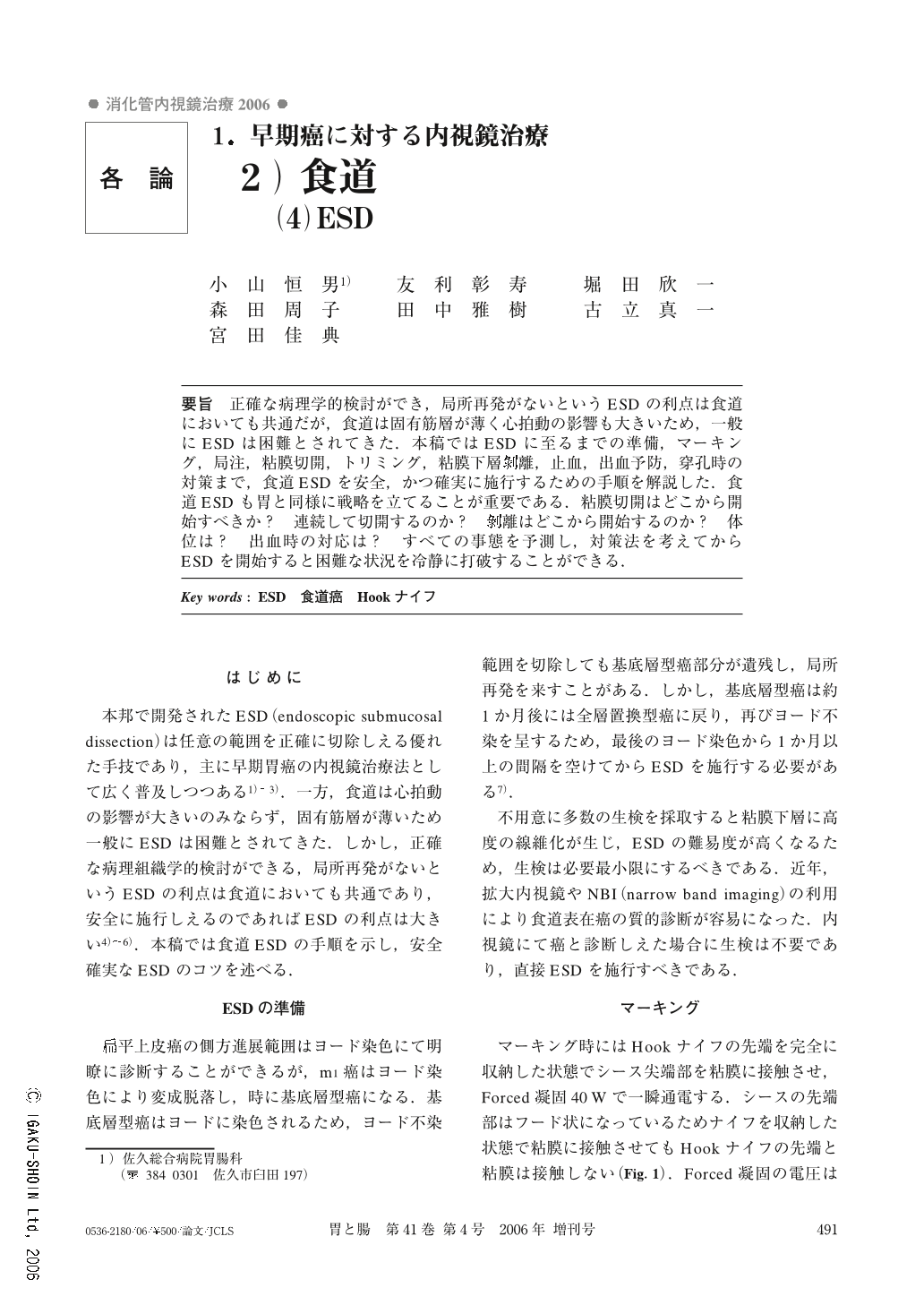Japanese
English
- 有料閲覧
- Abstract 文献概要
- 1ページ目 Look Inside
- 参考文献 Reference
- サイト内被引用 Cited by
要旨 正確な病理学的検討ができ,局所再発がないというESDの利点は食道においても共通だが,食道は固有筋層が薄く心拍動の影響も大きいため,一般にESDは困難とされてきた.本稿ではESDに至るまでの準備,マーキング,局注,粘膜切開,トリミング,粘膜下層剝離,止血,出血予防,穿孔時の対策まで,食道ESDを安全,かつ確実に施行するための手順を解説した.食道ESDも胃と同様に戦略を立てることが重要である.粘膜切開はどこから開始すべきか? 連続して切開するのか? 剝離はどこから開始するのか? 体位は? 出血時の対応は? すべての事態を予測し,対策法を考えてからESDを開始すると困難な状況を冷静に打破することができる.
The specimens resected by EMR are often too small, so piece-meal resection is usually performed for large lesions. However, the local recurrence rate after piece-meal conventional EMR methods is higher and precise pathological diagnosis is often impossible in piece-meal resection cases. Because of this, we developed a novel endoluminal surgery method, “endoscopic submucosal dissection (ESD) with a hook knife” to fascilitate en-bloc resections.
Marks are put around the lesion with the hook knife in a 40 W forced coagulation mode (VIO 300D, ERBE). Next, glycerol is injected into the submucosal layer to separate the mucosa from the proper muscular layer. Then, an initial mucosal cut is made using the backside of the hook knife with dry cut mode. After that, the mucosa is hooked with the hook knife from the submucosal side to the esophageal lumen and cutting is repeated. Surrounding mucosal incision can also be carried out. Finally, the submucosal fibers and vessels are dissected using the hook knife with dry cut mode or spray coagulation mode (60 W, effect 2) from the oral side.

Copyright © 2006, Igaku-Shoin Ltd. All rights reserved.


